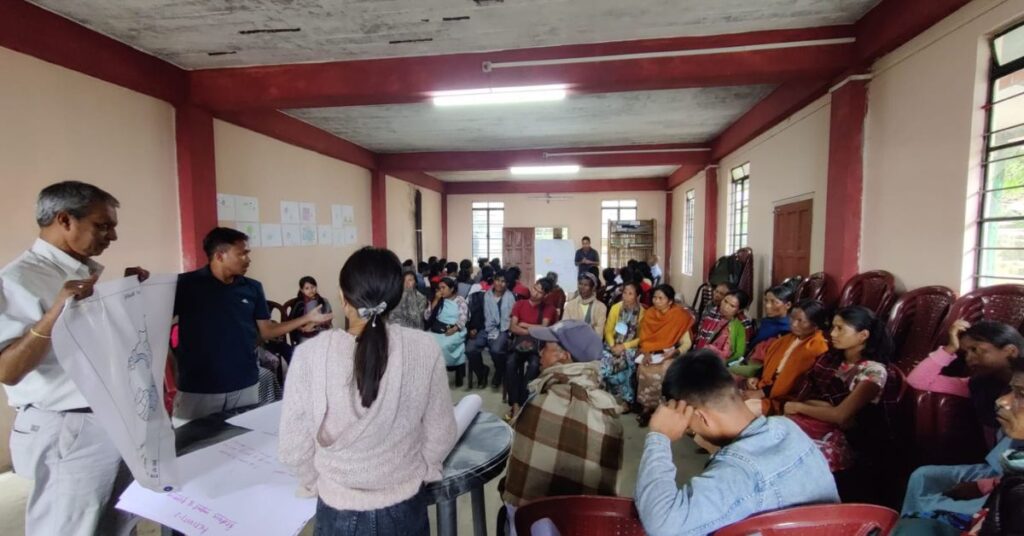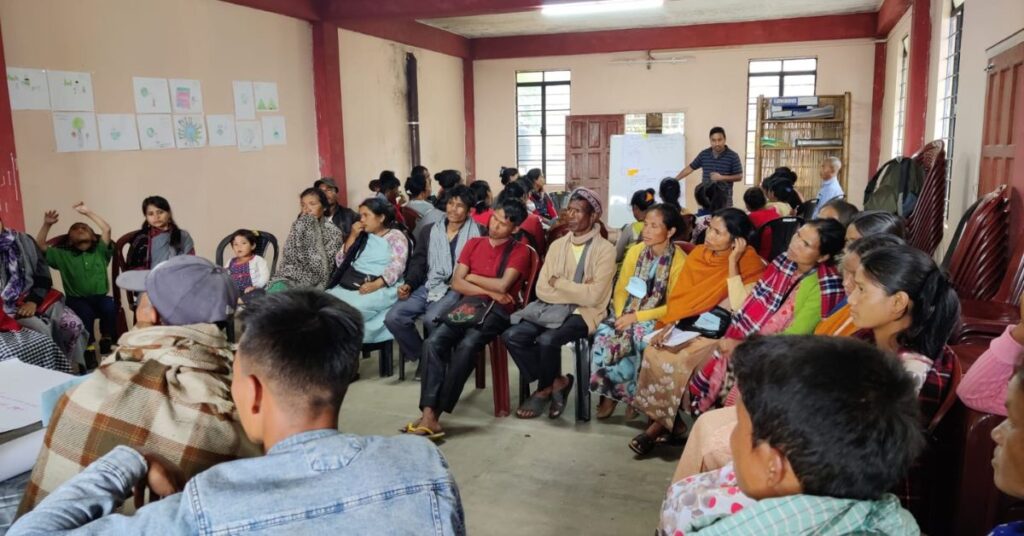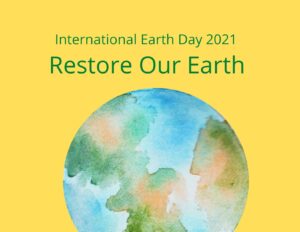Restoring the past for a better future
A two-day participatory workshop on the project “Implementation of the Indigenous Peoples’ Biocentric Restoration in Meghalaya” concluded on July 29, 2022, at Ladmawphlang. The workshop was facilitated by NESFAS in the presence of Dr. Dhrupad Choudhury, Senior Consultant for Research, Innovation for Climate Change & Training, Amba Jamir, Board Member, NESFAS and representatives of five communities i.e. Dewlieh, Nongwah, Umsawwar, Ladmawphlang and Nongtraw, East Khasi Hills.
As early as November of 2021, 5 Indigenous Peoples’ communities in East Khasi Hills, began to work on restoring some of their degraded land with due assistance from NESFAS and Food and Agriculture Organization of the United Nation (FAO). Following the global efforts framed on the UN Decade of Ecosystem Restoration, these communities have been hard at work, collating exhaustive lists of the flora and fauna in the area, creating community nurseries and fostering saplings and gradually working up to actual execution of the plan. This week marked an important landmark wherein the community executives sat together with some experts in the field in a participatory workshop to discuss and share ideas and solutions on the subject of challenges faced by the community members.

The Indigenous Peoples’ biocentric restoration initiatives are active in four countries, Ecuador, India, Peru and Thailand. It is led by Indigenous Peoples and FAO. Its main objective is to restore degraded land in Indigenous Peoples’ territories through the recovery of Indigenous Peoples’ ancestral knowledge, territorial management and Indigenous Peoples’ values and relations with the territory. The activities look to restore the territory, considering all the species and living things that have inhabited it, not only those that have a function for human beings, to guarantee the protection and respect of Mother Earth.
This project focuses on the importance of the local biodiversity, Indigenous Peoples’ knowledge and then reviving that knowledge. It is also identifying degraded areas so that immediate steps of intervention can be taken and eventually hopes to see the mindset change among the communities about the importance of restoration of ecosystems. As one of the outcomes, the project also aims to establish “School of Life” which consists of a movement and a space to share knowledge between elders and youth, while walking the territory.
Puis Ranee, Executive Director of NESFAS, mentioned, ” It is important for all of us to put in full efforts and ensure that this project succeeds. More than 25 per cent of the world’s degraded land is unfortunately not recovering as it used to. Improper management of fallows and intensive use of chemicals has led to degradation and this greatly affects not just the locals but all of us”. The five communities that have been selected for this initiative are strong partner communities of NESFAS; some have been our stakeholders for a decade now, and these five, practice either jhum cultivation or bund, and this project will address the steps to restore, especially, the fallow lands in these food production systems and forest areas.
Ranee continued, “We have to protect and preserve our rich ecosystem, especially in rural areas. Only by doing so can we have plenty of food and water. We need to put this resolution forward to the Village Dorbar so that they can disseminate the information and pass the resolution easily.”

Sita Mary Nongrum, School of life member, Umsawwar, “This project opened our eyes and thoughts about the importance of preserving and enhancing the rich flora and fauna species for sustainable development but to also avoid the over-exploitation of the environment. It was through NESFAS intervention that we have come to realise the importance of rich species found in our area. Hence as community members, we must take the responsibility to work towards enhancing and preserving the ecological balance in nature.”
Dr. Dhrupad Choudhary also noted, “Changes (climate change) have come about so fast. Conservation of nature comes from the community. We, as an organisation, are here to support the work that the community is already doing. We just want to aid in ensuring sustainability – and provide for the future generations”.
Many ideas were put forth at the participative workshop- the use of bioinoculants, traditional forms of mulching, vermicomposting, youth involvement, etc and the community members discussed, at length, their agreeability and the areas that they disagree with or foresee many challenges.

Amba Jamir, Board Member, NESFAS expressed, “This project is about reconnecting with the past, it is not just deforestation and afforestation alone but it is everything. This project is not only about regenerating forestland but also about preserving food security. It is pertinent to involve youths in these plans, especially for a sustainable future”.
The aim of this workshop was to fortify FAO and NESFAS’ collaboration and transparently review and scrutinise all the activities that will be conducted under its banner. The workshop was a platform for the community executives to clarify all their perspectives and also air out their concerns, giving way to the successful and gainful execution of the project.
Jacenta Ranee, a custodian farmer, Nongtraw, expressed, “It was a fruitful workshop because we also learnt about the progress and challenges of the other communities who are part of the project. I also learnt a lot of ideas from the other participating communities”.
Dr. Bhogtoram Mawroh, Sr. Associate, NESFAS remarked, “Our (NESFAS and the communities) goal is to show that people are not the problem, they are the solution and especially Indigenous Peoples who are the most marginalised throughout the world. They have actually been conserving the landscape and they play a big role in restoring the landscape as well. What is being ignored is that in these areas, the Indigenous Peoples have been conserving nature for a very long time.” In the long run, these five communities will be the model communities for biocentric restoration in the context of Indigenous communities.
The workshop concluded with fruitful discussions and debates wherein the Village Durbars decided the way forward for this project in order to preserve and sustain the ecosystem around us. As Shaiphar Dohling, Community Consultant, NESFAS, rightfully said in the closing remarks, “the wellbeing of the environment is our wellbeing”.



